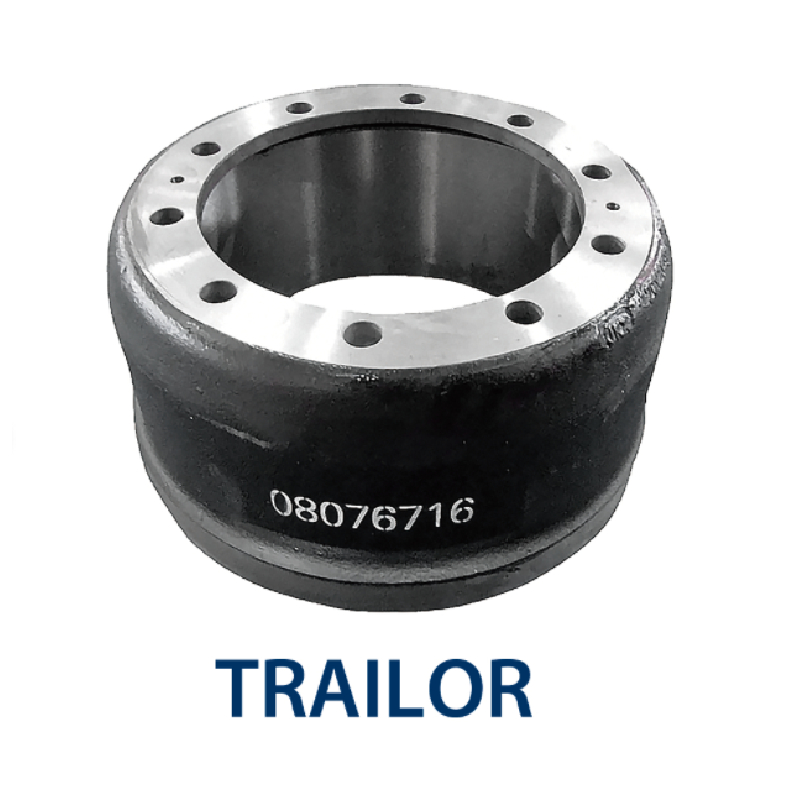Dec . 04, 2024 16:25 Back to list
Understanding Brake Drum Functionality and Maintenance for Optimal Vehicle Performance
Understanding Brake Drums The Unsung Heroes of Automotive Safety
When we discuss vehicle safety and performance, the conversation often revolves around the engine, tires, or advanced driver-assistance systems. However, one crucial component that often goes unnoticed is the brake system, specifically the brake drum. Understanding brake drums and their functionality can provide insights into automotive performance and, most importantly, safety.
What is a Brake Drum?
A brake drum is a cylindrical component that works as part of a drum brake system. In this system, the brake drum is connected to the wheel and rotates with it. When the driver presses the brake pedal, brake shoes are pushed against the inner surface of the drum, creating friction that slows the vehicle down. This simple yet effective mechanism has been a staple in automotive design since the early 20th century.
Components of a Drum Brake System
A typical drum brake system comprises several key components the brake drum, brake shoes, wheel cylinder, and several springs and levers. The brake drum itself is usually made of cast iron or aluminum, designed to withstand high temperatures generated during braking. The brake shoes are lined with friction material, which provides the necessary grip against the drum surface.
The wheel cylinder plays a critical role by using hydraulic pressure to push the brake shoes outward into contact with the drum. Springs are employed to return the shoes to their original position when the brakes are released, ensuring that the shoes do not remain in contact with the drum, which would cause excessive wear.
Advantages of Brake Drums
1. Cost-Effective Brake drum systems are generally less expensive to manufacture and maintain compared to disc brake systems. This cost-effectiveness makes them a popular choice for budget-conscious drivers and manufacturers.
2. High Heat Dissipation While disc brakes are well-known for their ability to dissipate heat quickly, brake drums also have significant heat retention properties. This is particularly advantageous in situations where sustained braking is required, such as when driving downhill.
3. Effective at Low Speeds Drum brakes provide greater stopping power at lower speeds and can generate high levels of friction, which is ideal for city driving conditions.
4. Self-Adjusting Features Many drum brake designs incorporate self-adjusting mechanisms, which ensure that the brake shoes maintain optimal contact with the brake drum as they wear down over time.
brake drum

Disadvantages of Brake Drums
Despite their advantages, brake drums also come with a set of disadvantages. One of the most significant drawbacks is heat retention, which can lead to brake fade. When excessive heat builds up, the effectiveness of the brake can diminish, potentially compromising safety.
Moreover, drum brakes are generally heavier than their disc counterparts, which can impact overall vehicle performance. Additionally, they are more prone to moisture retention and can suffer from reduced effectiveness in wet conditions.
Maintenance of Brake Drums
Regular maintenance is essential for ensuring the longevity and effectiveness of brake drums. Here are some tips for maintaining a drum brake system
1. Inspection Periodically inspect the brake drums for signs of wear, scoring, or cracks. If the surface of the drum is uneven, it may require resurfacing or replacement.
2. Brake Shoe Replacement Monitor the thickness of the brake shoe lining. If it becomes too thin, it should be replaced immediately to prevent damage to the drum.
3. Keep It Clean Dirt and debris can decrease braking efficiency. Keeping the brake system clean helps maintain optimal performance.
4. Consult Professionals For any significant maintenance or repair work, consulting a professional mechanic is advisable to ensure the safety and reliability of the braking system.
Conclusion
In conclusion, brake drums are vital components of many vehicles, playing an essential role in safety and performance. While advancements in automotive technology have led to the widespread use of disc brakes, the humble brake drum continues to be an effective and economical choice for many applications. Understanding the functionality, advantages, and maintenance of brake drums can help vehicle owners appreciate this oft-overlooked component and ensure their driving experience remains safe and reliable.
-
HINO Industrial Solutions - ¡Ң���ຽ��е��������˾ | Advanced Efficiency&Customization
NewsJul.13,2025
-
HINO Industrial Efficiency Solutions - ¡Ң���ຽ��е��������˾
NewsJul.13,2025
-
HINO Industrial Solutions - ¡Ң���ຽ��е��������˾ | Advanced Technology&Reliability
NewsJul.13,2025
-
HINO Industrial Efficiency-Jiangsu Hino Industrial|Productivity Optimization&Cost Reduction
NewsJul.12,2025
-
HINO-¡Ң���ຽ��е��������˾|Advanced Industrial Solutions&Energy Efficiency
NewsJul.12,2025
-
Premium Brake Drum Iveco – Durable Drum Brake Drum & Brake Shoe Solutions
NewsJul.08,2025
